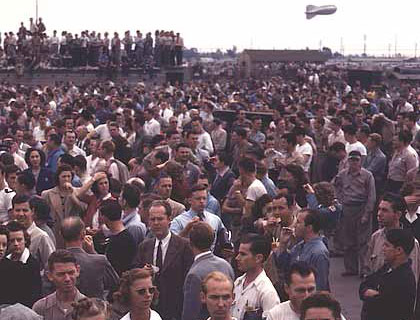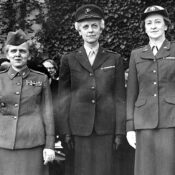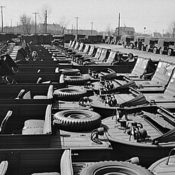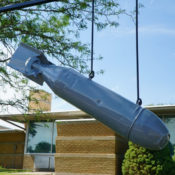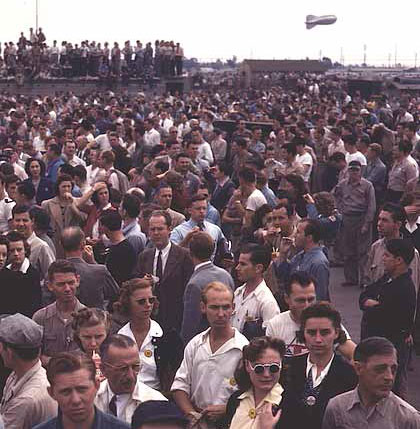
(Note the barrage balloon on the horizon, intended to protect the plant against air attacks (though it would have been a remarkable German or Japanese pilot who could have flown all the way to Texas.)
I’m interested in seeing how America’s media covers the 75th anniversary of World War II in the coming weeks. Or if they cover it.
In the U.S., we tend to think of the war as starting on December 7, 1941, when the Japanese bombed the U.S. naval base at Pearl Harbor. But on that day our country was joining a war that had already been in progress for over two years. It had begun on the other side of the world in September 1939 when Adolf Hitler sent his army into Poland, prompting Great Britain and France to declare war on Germany. Those events lead, eventually, to the deaths of 407,000 American servicemen and women and the wounding of another 670,000. They also set the United States on the course that made it the first superpower of the modern age.
To commemorate the 75th anniversary of the war that transformed America, I will begin at the beginning, with material written when World War II seemed so far away. Each week in this blog, I will report the approaching war as readers saw it in the Post.
The great benefit of hindsight is that it can reveal historical events in their entirety. We can see strategies and actions that were hidden to people of the times. The disadvantage of hindsight, however, is that we tend to look at events in light of their outcome. Thus we see the war in the light of America’s eventual victory.
This view obscures the experience of Americans who lived through those years. They knew it as a time of doubt and worry, particularly in the early months of the war; they couldn’t be certain their country could survive.
We can only understand what Americans sacrificed and accomplished if we understand the burden of uncertainty and fear they lived under. We forget that many Americans worried of an imminent invasion by Japanese forces on the West Coast. Many feared the sudden appearance of German or Japanese bombers over their cities. And a lot of Americans expected the country would fall back into the Depression as soon as the fighting was over.
It was hard enough for a typical American to work a 48-plus-hour week in a defense plant, get by on four gallons of gasoline a week, face shortages at the grocery store, and plan their meals around the coupons left in their ration books — all while worrying about a loved one on the front line. It was even harder when they didn’t know whether their sacrifices would be wasted in a defeat.
In this series, I’ll be looking down the road toward war as Americans of 1939 saw it. I think this perspective can give a view into their world and a better appreciation of what they achieved.
Become a Saturday Evening Post member and enjoy unlimited access. Subscribe now
